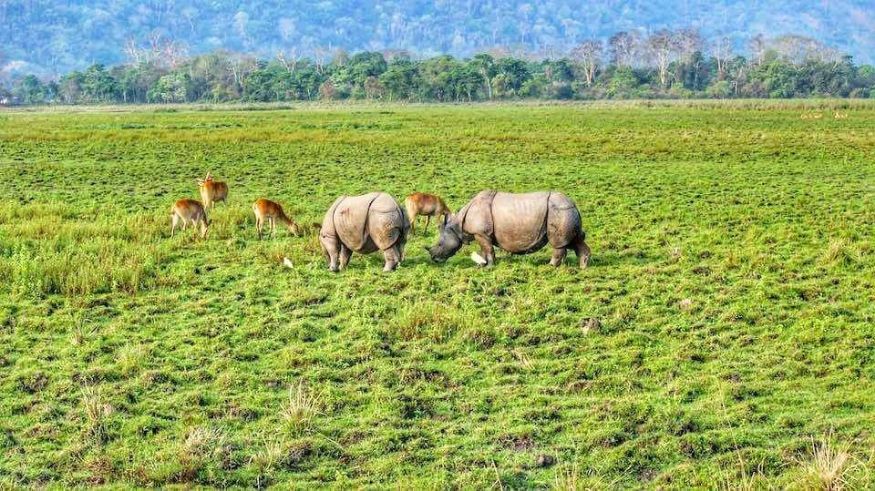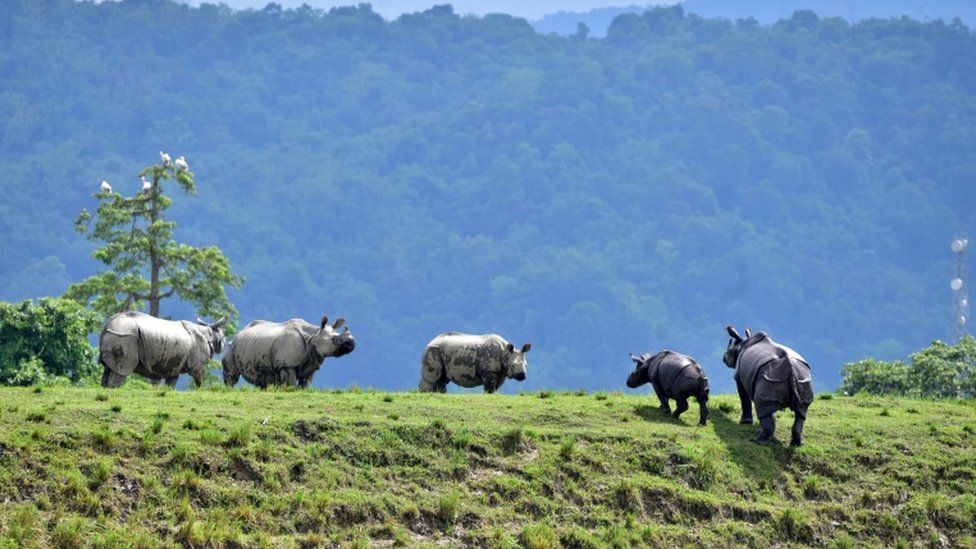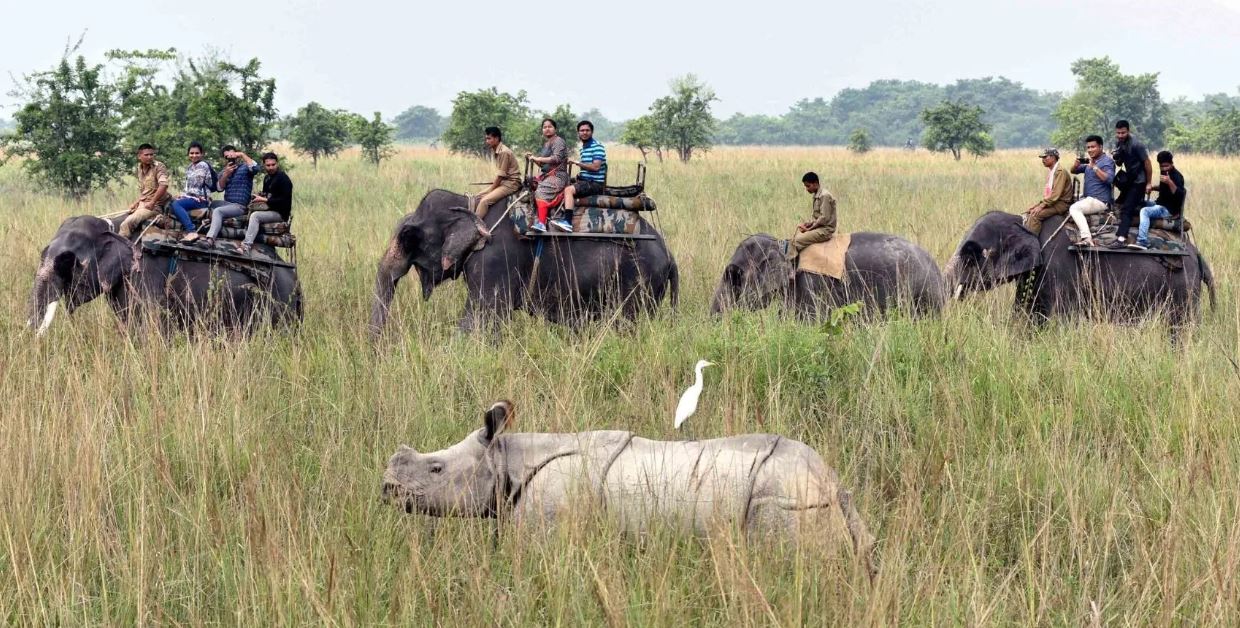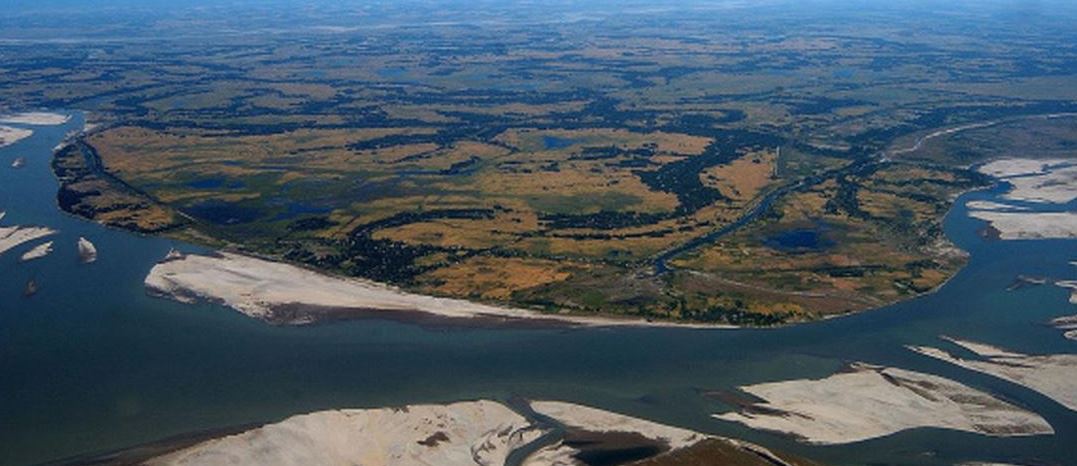
Explore the Tourist Attractions near Kaziranga National Park
Nestled in the verdant landscapes of Assam, Kaziranga National Park contributes to India’s rich biodiversity and natural beauty. Famous worldwide for its population of the endangered one-horned rhinoceros, Kaziranga is a UNESCO World Heritage Site and a haven for numerous other species of wildlife. Beyond the boundaries of this iconic park lie several places that offer visitors a chance to delve deeper into the cultural, historical, and natural wonders of the region.
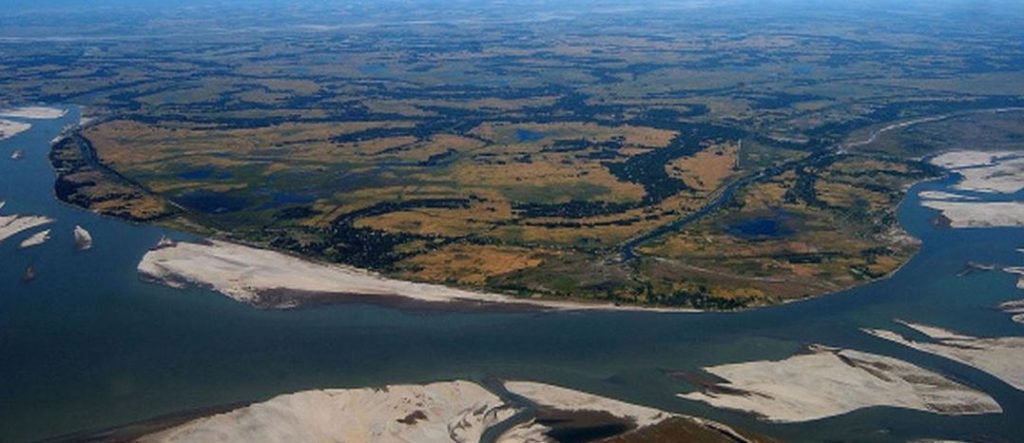
Take a jeep safari or an elephant safari to explore the flora and fauna of Kaziranga. The Best time to visit Kaziranga is from November to March, as the weather remains pleasant and therefore is considered to be peak tourist season. The national park remains closed during the monsoon season from June to mid-October. The delightful sights of the one-horned rhino or the Bengal tiger make the safari worthwhile. Book your safaris in advance to enjoy traversing across the four safari zones of Kaziranga, namely, Kohora Range (central), Bogori Range (western), Agaratoli Range (eastern) and Burapahar Range (Ghorakati). Beyond the wildlife safaris in Kaziranga, do not miss the opportunity to visit the nearby attractions of the national park, which are perfect getaway spots for a day visit.
- Deoparbat Ruins – The Deoparbat Ruins, situated in close proximity to Kaziranga National Park, are also known as Deopahar. This archaeological site is renowned for its ancient ruins perched atop a hill, including a temple where broken statues are scattered, offering glimpses into its ancient past. Tourists can admire the Numaligarh tea estate and the nearby Karbi Anglong hills from this vantage point. Taxis from Kaziranga National Park provide easy access to the Deoparbat Ruins, making it convenient for tourists to explore other attractions in the Golaghat district during a day trip.
- Majuli Island – Majuli, located on the Brahmaputra River in Assam, is the world’s largest river island. It was formed by the Brahmaputra to the south and the Kherkutia Xuti joined by the Subansiri River to the north. Majuli serves as the cultural hub of Assamese civilization, centered around its main village, Naghmar, where significant festivals, events, and prayers unfold. Renowned as a learning center for neo-Vaishnavite philosophy, Majuli hosts 22 Vaishnava Satras, established by Sankaradeva in the 15th century, drawing numerous visitors. The island’s vibrant festivals, such as Raas Purnima in Kartik showcasing Krishna-centric dances and the Majuli Festival with cultural performances from across Assam, are major attractions.
- Kakochang Waterfall – Located near Naharjan Gaon village, Kakochang Waterfalls in Assam is renowned as one of the region’s finest cascades and stands out as a prime attraction near Kaziranga National Park. Known locally as Keipholangso Falls, it is nestled amidst lush tea and coffee plantations, offering a picturesque setting. Plummeting from a height of approximately 40 metres, the waterfall provides a refreshing opportunity for visitors to take a cool dip in its waters. The surrounding tea estates enhance the experience with their breathtaking vistas. Accessible via a 3.5 km trek from Naharjan Gaon, reaching Kakochang Waterfalls promises an adventure amidst nature’s beauty.
- Addabarie Tea Estate – Founded during the British colonial era in 1864, the Addabarie Tea Estate spans 22 acres near Tezpur, providing a tranquil retreat immersed in the realm of tea. Visitors can experience the complete journey of tea leaves, from plucking to brewing, amidst the estate’s lush tea gardens adorned with meticulously groomed bushes, creating a scenic vista. Adjacent to the estate, the Wild Mahseer heritage bungalow adds to its allure by offering luxurious accommodations amidst natural surroundings. Unique activities such as Elephant Treks through the tea gardens further enrich the visitor experience, making Addabarie a destination not to be missed for tea enthusiasts and nature aficionados alike.
- Bamuni Hills – The ancient ruins of the Bamuni Hills are a site of great archeological interest. It is located near Tezpur town on the right bank of the Brahmaputra river just near Bhairavi temple. It is assumed that there was a Vishnu temple at the centre and four Shiva temples in four corners of the hillock. They were of Panchayatana style. There are also the ruins of an isolated temple on the northeastern side. The carvings on the walls and pillars of the temple speak a lot about the skills and talent of the contemporary artisans and sculptors. Going by the dates, the temple is believed to have belonged to the kings of the Pala dynasty. According to many scholars, these ruins are a result of some devastating earthquake.
